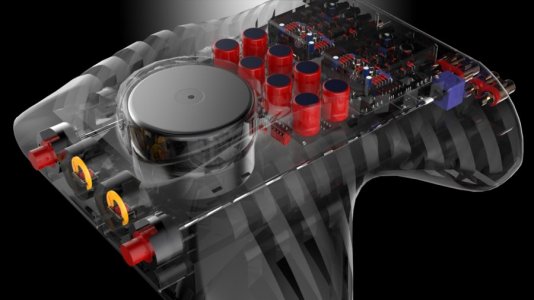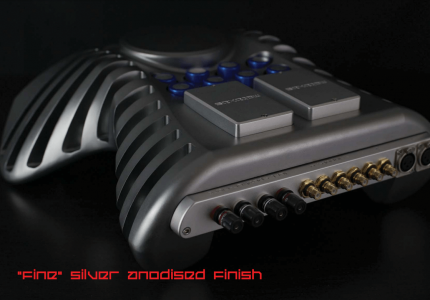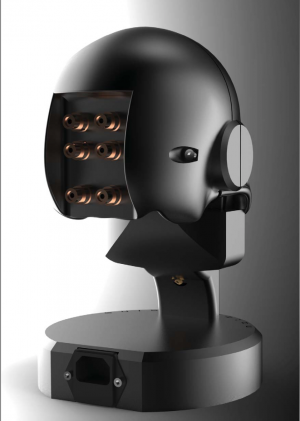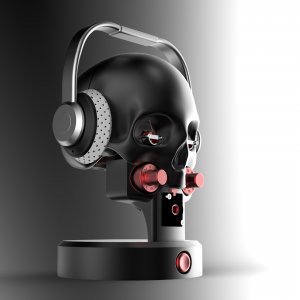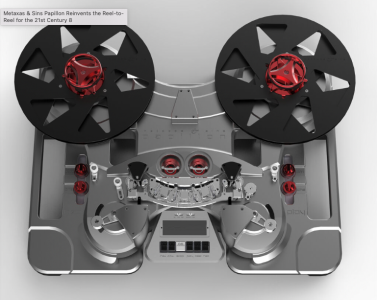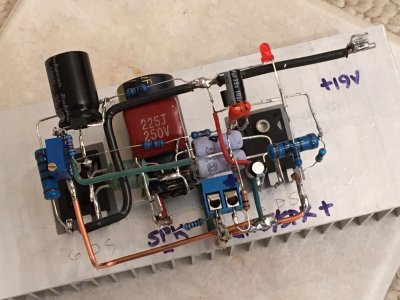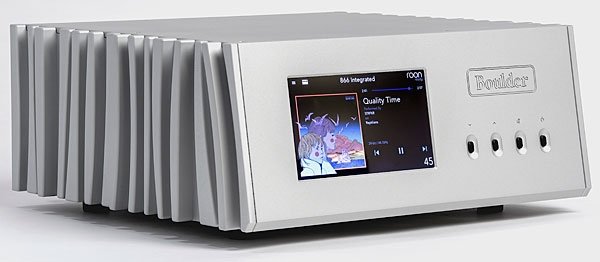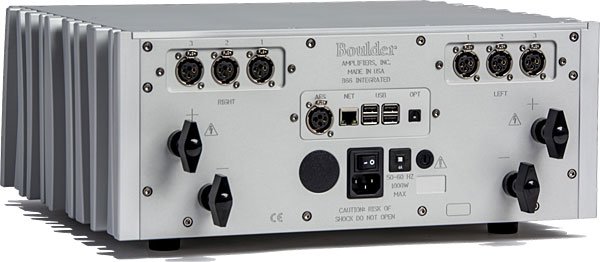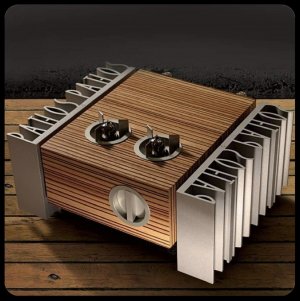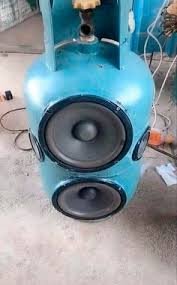If such an egg was available I would buy it in a jiffy. I presume the egg's insides has been lined with sound absorbent material. This would avoid the need to have room treatment done on the walls behind the ears.Panasonic Audio Eggs (1972)
View attachment 69921
View attachment 69922
This gem from the early 70s ran with the tagline “stereo lays an egg” and combined the iconic egg chair with an inbuilt stereo system for the ultimate in kitsch home interiors.
It may be a flashback but a quick look through any cool design mag shows that the Panasonic Audio Egg would have no trouble finding a home today. With deep-pile fake fur, volume control at your fingertips, convenient swivel action and even a high-intensity lamp, you could pretty much set up camp in this womb-like egg and never leave!
Swinging 70s hipsters also had the option of choosing a romantic love-seat model for two, so they could share their plush chamber. Advertising from the era offered consumers padded ottomans, a range of Panasonic stereo options and even a “Playboy Club” discount for the man about town.
You are using an out of date browser. It may not display this or other websites correctly.
You should upgrade or use an alternative browser.
You should upgrade or use an alternative browser.
Unconventional Audio Designs!
- Thread starter aeroash
- Start date
If such an egg was available I would buy it in a jiffy. I presume the egg's insides has been lined with sound absorbent material. This would avoid the need to have room treatment done on the walls behind the ears.
Modern iterations are available. Here's an example (although from 2010) https://www.ecoustics.com/products/acousticom-sound-egg-chair/
I'm guessing this would be like a glorified headphone! Perfect solution for those who don't want an uncomfortable clamping force around the head and have to deal with warm ears from headphones.
Metaxas & Sons - IKARUS Integrated Amplifier
The heart of the IKARUS is an easily accessible amplifier module on 2 x 9 pin DIN connectors which resides under a 3mm thick, CNC-machined module cover.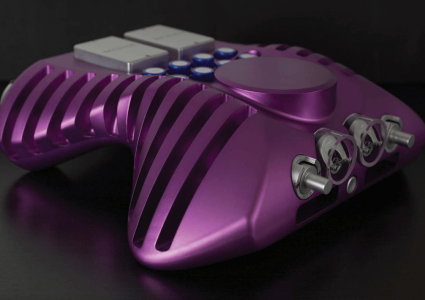
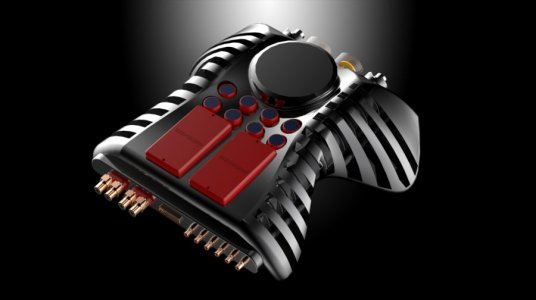
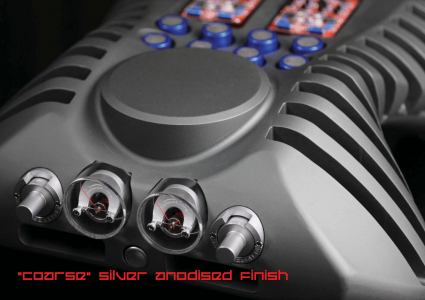
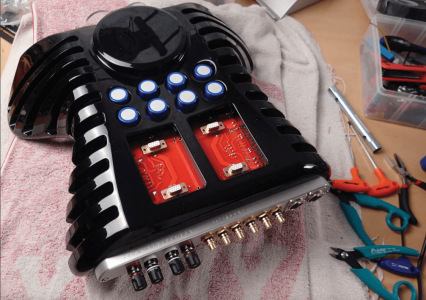
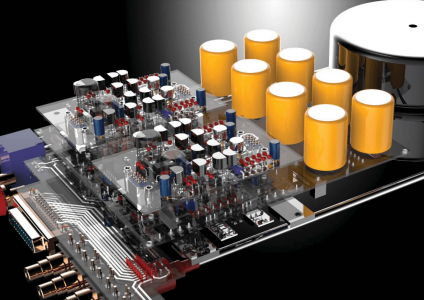
Specifications:
FREQUENCY RESPONSE : DC - 5.0MHz (-3dB)
POWER OUTPUT: 50WRMS per channel into 8 Ohms with no more than 0.05% T.H.D.
DAMPING FACTOR: Greater than 500 wide band
SLEW RATE: Greater than 1000V/us small and large signal
T.H.D. : Less than 0.05% 20Hz-20KHz I.M.D.(S.M.P.T.E.) : Less than 0.05%
SIGNAL/NOISE: -117DBV unweighed input shorted
SENSITIVITY: 0.5VRMS in for 50WRMS out (35dB)
INPUT IMPEDANCE: 100kOhms in parallel with 11pF
Metaxas Marquis Headphone Amplifier (2017) - $7800
Specifications:
FREQUENCY RESPONSE : DC – 5.0MHz (-3dB)
VOLTAGE OUTPUT: 15VRMS per channel into 50 Ohms with no more than 0.05% T.H.D.
SLEW RATE: Greater than 1000V/us small and large signal
T.H.D. : Less than 0.05% 20Hz-20KHz
I.M.D.(S.M.P.T.E.) : Less than 0.05%
SIGNAL/NOISE : -117DBV unweighed input shorted
SENSITIVITY: 26dB
INPUT IMPEDANCE : 100kOhms
As well as a dedicated headphone amplifier and headphone stand, the MARQUIS also can be used as a minimalist preamplifier with a choice of 3 line-level inputs [RCA connectors] and a set of RCA outputs to connect to a power amplifier to drive a pair of speakers.
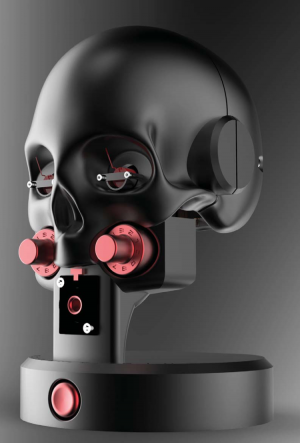
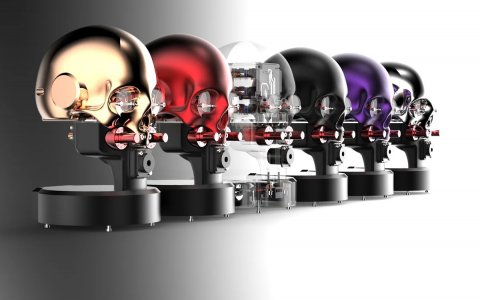
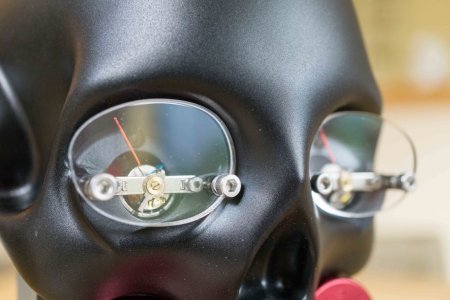
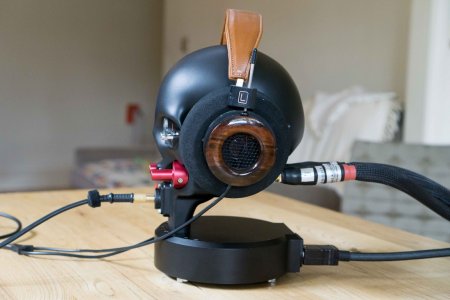
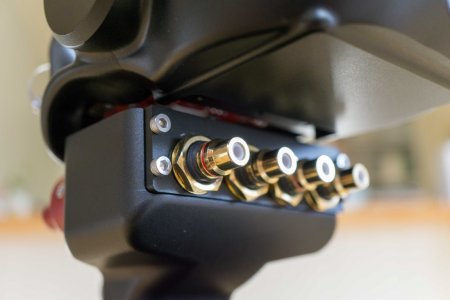
Metaxas & Sins - Papillion
Multi-award-winning Australian artist, industrial designer and engineer Kostas Metaxas introduces the bespoke Papillon, his audio company Metaxas & Sins’ third reel-to-reel player/recorder.
According to Kostas Metaxas, the R2R Metaxas & Sins Papillon will be released in a very limited edition of only 10 pieces. In the minimum configuration of “clean” transport Papillon will cost the future owner 45 thousand euros, and the full stereo version with three heads and electronics for recording and playback will cost 75 thousand euros.
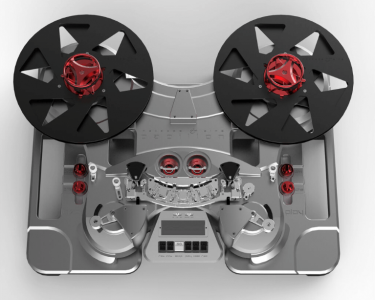
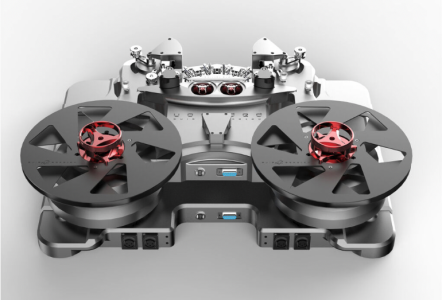
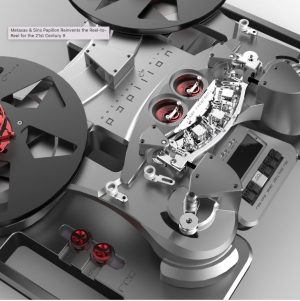
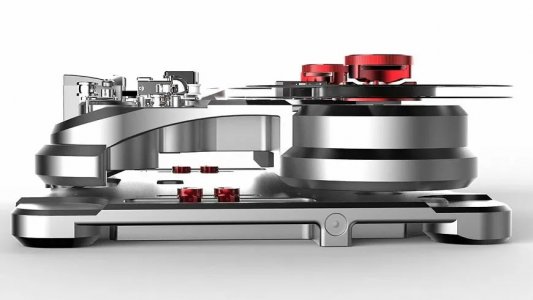
Attachments
The Metaxas & Sins ‘GQT’ (Georges Quellet Tribute)
The Metaxas & Sins ‘GQT’ (Georges Quellet Tribute) is a portable analogue tape machine designed for on-location recording as well as for home or studio playback. Biased for either SM468 or SM911 1/4″ analogue tape, it operates at 15ips using a brushless DC motor in a purely mechanical operation. In other words, it’s built like a large mechanical Swiss watch mechanism – with absolutely no logic controls or other computer-controlled components. The circuits use 100% discrete transistors and feature parts comparable in construction to those found in decks crafted in the 1960s and early 1970s before the introduction of logic controls and 5534 operational amplifiers.
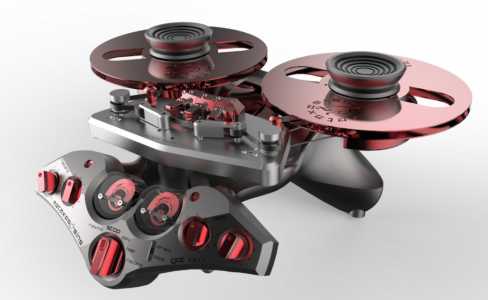
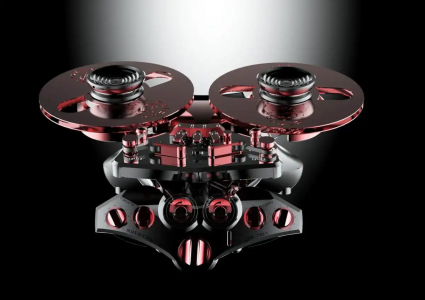
The Metaxas & Sins ‘GQT’ (Georges Quellet Tribute) is a portable analogue tape machine designed for on-location recording as well as for home or studio playback. Biased for either SM468 or SM911 1/4″ analogue tape, it operates at 15ips using a brushless DC motor in a purely mechanical operation. In other words, it’s built like a large mechanical Swiss watch mechanism – with absolutely no logic controls or other computer-controlled components. The circuits use 100% discrete transistors and feature parts comparable in construction to those found in decks crafted in the 1960s and early 1970s before the introduction of logic controls and 5534 operational amplifiers.


Metaxas & Sons - IKARUS Integrated Amplifier
The heart of the IKARUS is an easily accessible amplifier module on 2 x 9 pin DIN connectors which resides under a 3mm thick, CNC-machined module cover.
View attachment 69926
View attachment 69924
View attachment 69927
View attachment 69929
View attachment 69930
Specifications:
FREQUENCY RESPONSE : DC - 5.0MHz (-3dB)
POWER OUTPUT: 50WRMS per channel into 8 Ohms with no more than 0.05% T.H.D.
DAMPING FACTOR: Greater than 500 wide band
SLEW RATE: Greater than 1000V/us small and large signal
T.H.D. : Less than 0.05% 20Hz-20KHz I.M.D.(S.M.P.T.E.) : Less than 0.05%
SIGNAL/NOISE: -117DBV unweighed input shorted
SENSITIVITY: 0.5VRMS in for 50WRMS out (35dB)
INPUT IMPEDANCE: 100kOhms in parallel with 11pF
For a second there, this looked like a new Xbox controller…
Subbu68
Well-Known Member
Philips Playby 22GF403 briefcase record player (1971-75)
Details:Model:
Playby 22GF403 /03L - Philips; Eindhoven tubes
Rec.Player+Audio.Amp+LS
Power type and voltage
Line / Batteries (any type) / 110; 127; 220; 240 / 6×1,5 Volt
Loudspeaker
Permanent Magnet Dynamic (PDyn) Loudspeaker (moving coil) - elliptical
Power out
1.5 W (unknown quality)
Material
Plastics (no bakelite or catalin)
Shape
Portable set > 8 inch (also usable without mains)
Dimensions (WHD)
410 x 260 x 80 mm / 16.1 x 10.2 x 3.1 inch
Net weight
2.9 kg
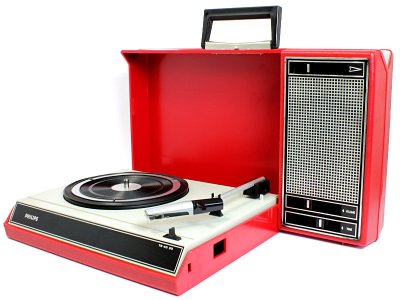
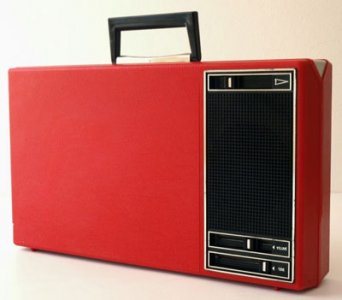
Sony Discman D-88 Portable CD Player (1988)
The Sony Discman D-88 is one of the smallest Discman models ever produced. Sony also makes the D-82 CD Walkman, which is a similar-sized CD player. The D-88 is even smaller than a CD jewel case, measuring 95mm by 95mm, yet it can play full size 12cm or 120 mm CDs, whereas the D-82 can only play 8cm tiny CDs. Compromises had to be made in order to maintain a minimal footprint. The battery isn't built-in; instead, it's an external battery that slots into the D-88's top side. Even with the additional battery, the device is only 120mm long. It's very incredible!So you're wondering how this teeny-tiny player manages to play 12cm CDs. It works by allowing you to shift the pick-up between the 8 cm and 12 cm positions using a lever on the inside. A portion of a 12cm CD gets visible while being played back.
Specifications:
Laser Diode Properties: Material GaAIAs, Wavelength 780 nm
Laser Output: Max 44.6 uW
Spindle Speed: 500 rpm to 200 rpm CLV
Frequency Response: 20Hz to 20kHz
Headphone Output: 9mW x 2 @ 32 ohms
External Battery: BP-2EX BP2, 500mAH 4 Volt 9 Volt DC
Dimensions: 94.5mm Width x 32.9mm Height x 99mm Depth
Weight: 300 g 10.6 oz not including rechargeable battery pack and case.
approximately 400 g 14.2 oz including rechargeable battery pack and case.
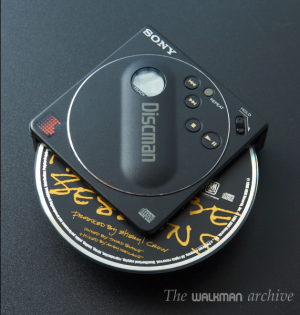
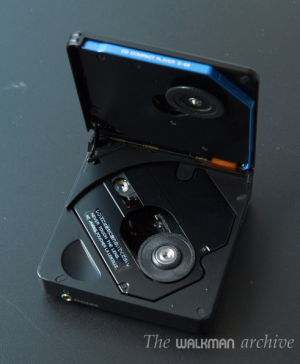
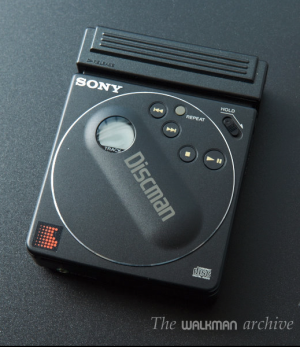
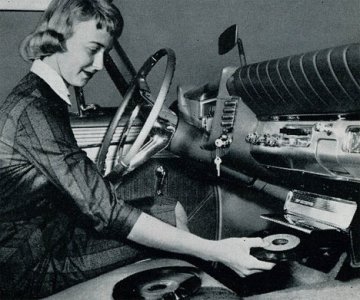
In the winter of 1956, Chrysler unveiled a series of features for their lineup of automobiles. And one of them was the Highway Hi-Fi, a factory-installed record player mounted under the car's dashboard.
Using an "elastic three-point suspension," the unit played "non-breakable" 7-inch records. In advertising copy, Chrysler touted that the discs would never skip, not even during sharp turns or while crossing railroad tracks. "It’s almost impossible to jar the arm off the record," the company promised. As it turned out, attempting to spin a record while in a moving vehicle was every bit as problematic as it might sound. But before 8-tracks, cassettes, CDs, and satellite radio, the Highway Hi-Fi represented the first opportunity for drivers to have some control over what they were listening to. They had autonomy—freedom to deviate from radio programmers, invasive ads, and boring talk shows.
Peter Goldmark, the inventor, His own creation, the LP, was far too big to have any practical application in a vehicle: the turntable would hang over a passenger’s knees. The 45 RPM record was much smaller but could only hold about five minutes of music on each side. Forcing someone to try and change records with such frequency while driving would likely result in accidents.
Goldmark devised a new option. Using a 7-inch record, he created a surface with ultra-microgrooves that played at 16 and two-thirds RPM. Each side could hold 45 minutes of music, a far more practical solution for people who couldn’t tend to the turntable easily. It also fit snugly under the dash, projecting out at the push of a button so the user could load a record and set the needle before pushing it back underneath and out of the way.
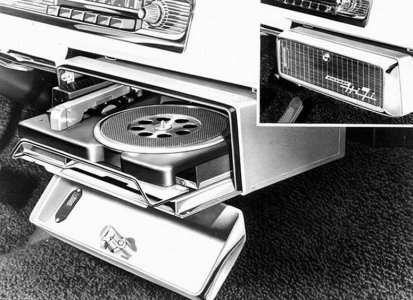
Goldmark made other adjustments. The vinyl records were thicker than standard LPs, so they would be more heat-resistant during the summer months. He also developed a spring enclosure to absorb shocks and a counterweighted needle arm to make sure it wouldn’t leap off the record while travelling over bumps.
Excerpt from "Mental Floss." Read the whole article here.
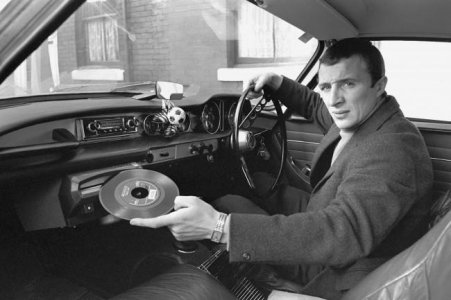
Last edited by a moderator:
Subbu68
Well-Known Member
One of our forum members owns this if am not mistaken.Brushed aluminium, black anodized aluminium, polished aluminium what not ..... first time to see crushed aluminium chassis
View attachment 70065
View attachment 70066
ELP Japan - LT Master (Laser Turntable)
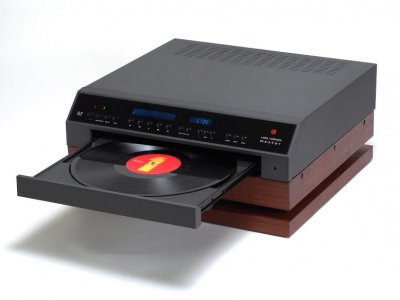
The turntable uses a combination of five lasers, which point in different directions of the groove in a vinyl record to ensure a steady signal is picked up. Because of laser technology, loading and unloading a vinyl record is similar to the process used in most high-end CD players.
The lack of mechanical components means it is far more capable of playing records, even those with scratches and warps, it also allows direct track selection like a CD, along with the ability to change pitch in smaller increments.
One notable disadvantage of the laser technology used is that it will not play clear or coloured vinyl, which was sometimes used for novelty singles and promotional material. Another is that while the technology allows for superior sound pickup, it also “reads” all dust and dirt in the grooves rather than pushing it aside, so clicks and pops can become much more pronounced.

The turntable uses a combination of five lasers, which point in different directions of the groove in a vinyl record to ensure a steady signal is picked up. Because of laser technology, loading and unloading a vinyl record is similar to the process used in most high-end CD players.
The lack of mechanical components means it is far more capable of playing records, even those with scratches and warps, it also allows direct track selection like a CD, along with the ability to change pitch in smaller increments.
One notable disadvantage of the laser technology used is that it will not play clear or coloured vinyl, which was sometimes used for novelty singles and promotional material. Another is that while the technology allows for superior sound pickup, it also “reads” all dust and dirt in the grooves rather than pushing it aside, so clicks and pops can become much more pronounced.
Yogesh
Well-Known Member
But sort of kills Vinyl Analogue charm. I guess this will work on analogue to digital to analogue conversion.ELP Japan - LT Master (Laser Turntable)
View attachment 70083
The turntable uses a combination of five lasers, which point in different directions of the groove in a vinyl record to ensure a steady signal is picked up. Because of laser technology, loading and unloading a vinyl record is similar to the process used in most high-end CD players.
The lack of mechanical components means it is far more capable of playing records, even those with scratches and warps, it also allows direct track selection like a CD, along with the ability to change pitch in smaller increments.
One notable disadvantage of the laser technology used is that it will not play clear or coloured vinyl, which was sometimes used for novelty singles and promotional material. Another is that while the technology allows for superior sound pickup, it also “reads” all dust and dirt in the grooves rather than pushing it aside, so clicks and pops can become much more pronounced.
From the ICE (In Car Entertainment) Car Audio World.
Panasonic Car Head Units with vaccum tube and jazzling light effects with power meters.
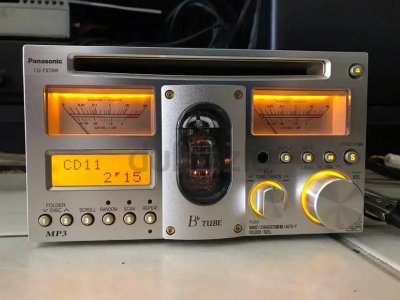
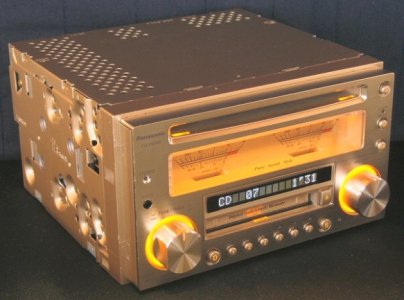
Here is one Unconvesional Audio(phile) Technology that never saw the daylight, but was marketed and reviewed by many magazines.
Moon Audio Dark Star Opulence which could be pre-ordered for 2 million USD:
The Opulence if ever built, would have employed innovative magnetic control systems developed from nuclear reactor containment to structure internal magnetic fields in a way that is non-damaging to music reproduction. The probable designers of the Opulence have been involved in the ultra high end audio industry internationally for the past 25 years where they methodically crafted the crucial design elements integrated into the products design. Installation and set-up in the customers home anywhere in the world would have been included in the purchase price.
DARK STAR:
This audiophile grade technology built into the Opulence would offer an optional second way of experiencing music which is independent of the drivers in the speaker itself and delivers music into the listeners brain, bypassing the ears. All other traditional speakers have produced sound which arrives at the brain through the ears. Dark Star is perceived as delivering music INSIDE the listeners brain and can be fully experienced with the ears completely plugged.
Anyhow this is the only speaker in the world with such technology that will never be manufactured.
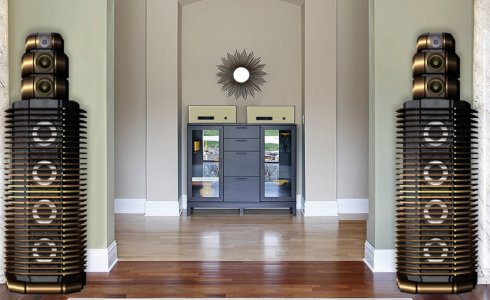
Panasonic Car Head Units with vaccum tube and jazzling light effects with power meters.


Here is one Unconvesional Audio(phile) Technology that never saw the daylight, but was marketed and reviewed by many magazines.
Moon Audio Dark Star Opulence which could be pre-ordered for 2 million USD:
The Opulence if ever built, would have employed innovative magnetic control systems developed from nuclear reactor containment to structure internal magnetic fields in a way that is non-damaging to music reproduction. The probable designers of the Opulence have been involved in the ultra high end audio industry internationally for the past 25 years where they methodically crafted the crucial design elements integrated into the products design. Installation and set-up in the customers home anywhere in the world would have been included in the purchase price.
DARK STAR:
This audiophile grade technology built into the Opulence would offer an optional second way of experiencing music which is independent of the drivers in the speaker itself and delivers music into the listeners brain, bypassing the ears. All other traditional speakers have produced sound which arrives at the brain through the ears. Dark Star is perceived as delivering music INSIDE the listeners brain and can be fully experienced with the ears completely plugged.
Anyhow this is the only speaker in the world with such technology that will never be manufactured.

Last edited by a moderator:
Subbu68
Well-Known Member
Why on earth would they do that? Looks pretty ugly, to be honest.
The Pathos Remix2 below gets it right, though.
View attachment 70102
That looks logical.Why on earth would they do that? Looks pretty ugly, to be honest.
The Pathos Remix2 below gets it right, though.
View attachment 70102
The top view of Boulder does not look bad though.
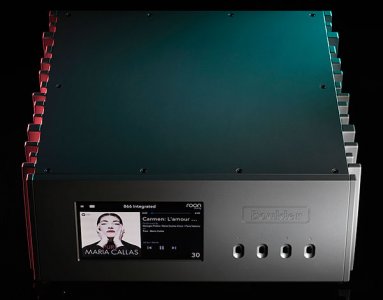
Oswalds Mill Audio - Special K
The Special K amplifier is an integrated design like all OMA amplifiers and requires no preamplifier. 8 new production KT88 tubes in pure Class-A triode connected push-pull design produce nearly 50 watts per channel into 8 ohms. Full dual-mono construction with CCS on the 6J5/6BX7 input/driver stages, all transformers custom-wound, amorphous core with silver OPTs and internal wiring. Custom Hoyt meters, cast iron, nickel and lacquered wood construction with tempered glass front ensure this amplifier stands apart visually as well as sonically.
Volume control and input selection (x4, RCA only) are easily accessed via the front panel.
25"W x 19"D x 27"H | 235 lbs
110v / 220v standard
Bandwidth measurements: -2db points at 10hz and 85Khz
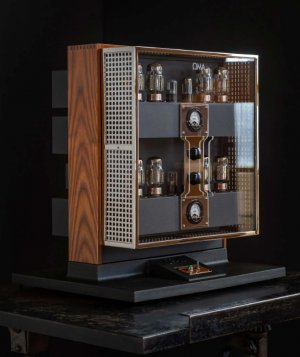
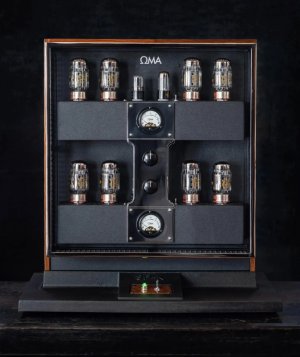
Gottenburg Odin - (with a 32" Woofer) - $165,000
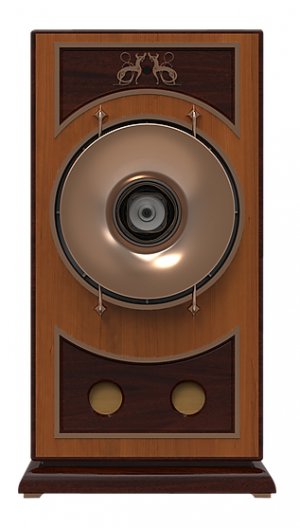
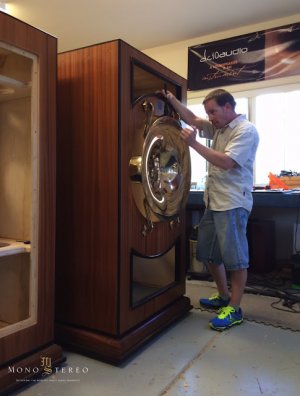
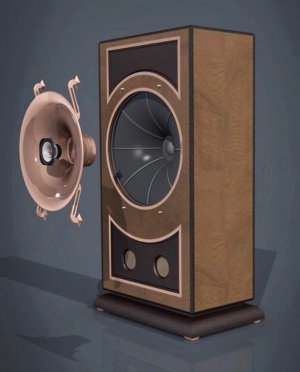
SPECIFICATIONS:
Bandwidth: 15 Hz - 50kHz
Sensitivity: 102 dB
Driver Complement: Hidden horn Loaded super tweeter with AlNiCo motor
6.0" full-range AlNiCo driver set in bronze horn
32" wide band woofer with hybrid ceramic/AlNiCo motor
Logarithmic Horn: 30" Silica Bronze-Alloy finished in natural bronze, silver, deep copper, black-silver (Hamburg finished (plated) in 925 Sterling Silver) Horns and parts cast in solid 925 Sterling silver PUR
Binding Post: Fine Silver terminals with speaker frame Earthing
Crossover: 6db first order with Deulund CAST copper capacitors and coils. Optional external crossover unit with bi-wiring capability. Full range driver (no filter) strain-gauge silver wire embedded in white cedar dialectical to reduce amplitude without any loss of detail.
Internal wire: 18awg solid core constant-cast high tensile strength 6N wire in pure cotton. The optional second run in 22awg 6N silver (wiring optimized for detail and efficiency, no plastic dielectric)
Time Alignment: Drivers are time-aligned mechanically and electrically.
Decoupling solid wood plinth hardwood torsion beams with .75mm travel perfectly decouple speaker from floor
Impedance: 6 or 12 Ohms
Recommended Power: 15 - 100+ high-volt tube watts, 50 - 500+ transistor watts
Dimensions: Total height: 71.5"
Cabinet: 67.2" high 33.5" wide 17" deep (Plinth 35.2" x 19.2 ")
Weight: 420-480 LBS Each
$165,000
Predicta Meteor (1997)
Inspired by the Space Age the Philco Predicta TV set was introduced for the 1958 model year. All sorts of products were beginning to adopt a futuristic look, but the Predicta's took it to an unprecedented level. However, their models may have been too futuristic for many consumers of the era. Sales lagged and many PredictaTVs were produced for the Holiday Inn hotel chain. The lack of a colour model finally sent Philco into bankruptcy.
Dave Riedel and Mike Lipscomb thought the same thing and created Riedel Electronics/Telstar LLC. Under this company, they began hand-making Predicta TVs between 1997 and ~2008 (no connection to Coleco Telstar). According to the Milwaukee Business Journal, Telstar's 8 different Predicta models were based on the original sets manufactured by Philco in Philadelphia from 1958 to 1962 - including the dramatic separation of the TV screen from the console.
Their clients ranged from collectors to celebrities, who would pay between $1,100 and $3,300. The manufacturing process was manual, enabling only about 100 sets to be produced annually. The Meteor has aircraft-inspired legs, a hand-built hardwood cabinet and a 24-inch screen, which pivots on a polished brass collar. And although these TVs are designed to fit into period houses, they’re still packed with the latest technology – easily connecting up with your cable/satellite supplier and video/DVD player.
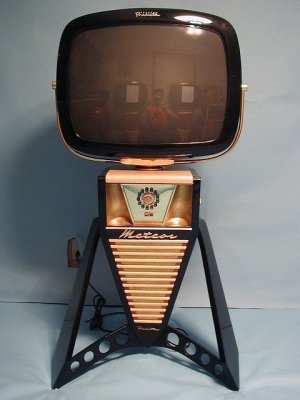
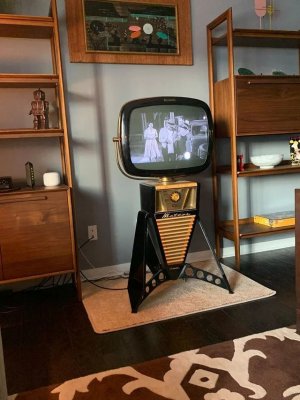
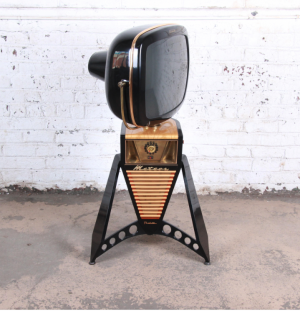
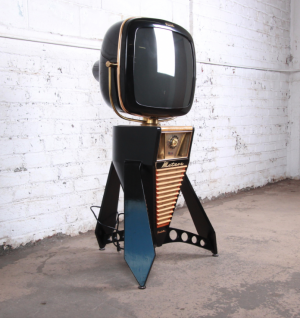
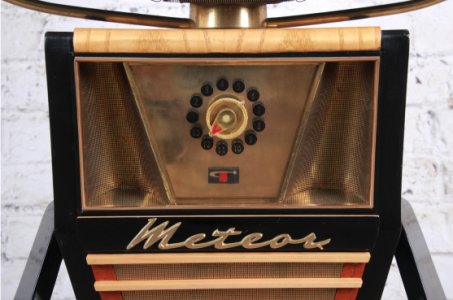
Oswalds Mills Audio - Monarch
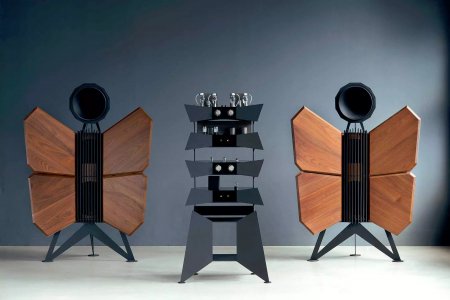
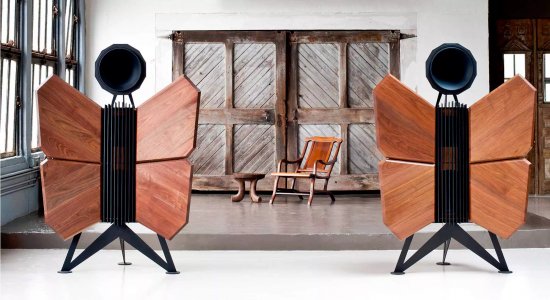
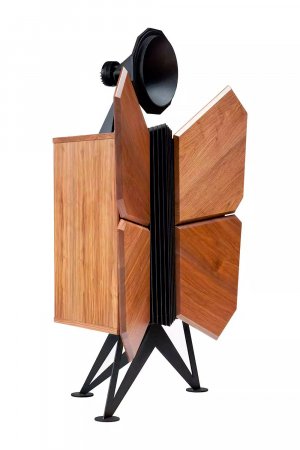
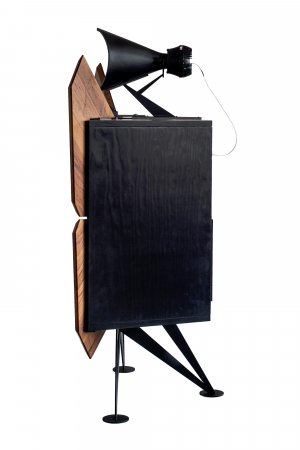
AVANTGARDE ACOUSTIC - TRIO XD
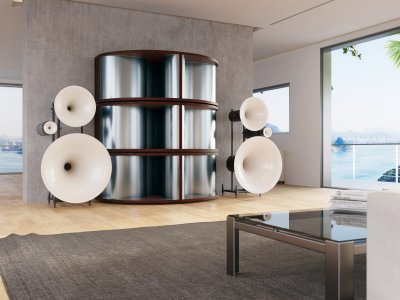
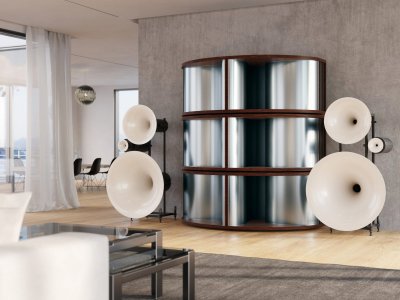
THE SYSTEM - OVERVIEW
109 dB efficiency
Up to 27 Ohm drivers, with Strontium ferrite magnets
180 mm spherical tweeter horn
570 mm spherical midrange horn
950 mm spherical low-midrange horn
100 V CPC crossover design
Subwoofers available as separate units
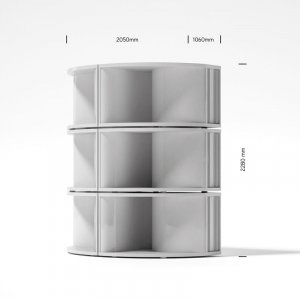
BASSHORN - configured as a 4-fold or 6-fold BASSHORN stack!
- Sealed enclosure design
- 1.4 m Expo-spherical horn flare
- DSP control
- Software for MAC/WIN
- 10 parametric EQ filters
- 2 x 12-inch bass drivers
- 1000 W bass amplifier
Last edited by a moderator:
I like the lights and these analog VU Meters . I'll take one!!!From the ICE (In Car Entertainment) Car Audio World.
Panasonic Car Head Units with vaccum tube and jazzling light effects with power meters.
View attachment 70093
View attachment 70094
Philco Predicta TV sets
The Philco Predicta is a television made in several cabinet models in a 17” or 21” screen by the American company Philco (Philadelphia Storage Battery Company) from 1958-1960.
The Predicta was marketed as the world’s first swivel screen television. The picture tube was surrounded in Eastman plastics' new product called “tenite” which protected the glass and gave it its greenish tint. The Predicta also had a thinner picture tube than many other televisions at the time, which led it to be marketed as a more futuristic television set. The futuristic aesthetic was influenced by an interest in space-age technology, prompted by Russia’s Sputnik launch in 1957. Philco’s advertisements for Predicta touted a “TV Today From the World of Tomorrow!”
Predicta television sets were constructed with a variety of cabinet configurations, some detachable, but all separate from the tube itself and connected by wires. Initially introduced in 1958 for the Holiday Inn hotel chain and rolled out for general consumers shortly thereafter, the Predicta was discontinued in the early 1960s.
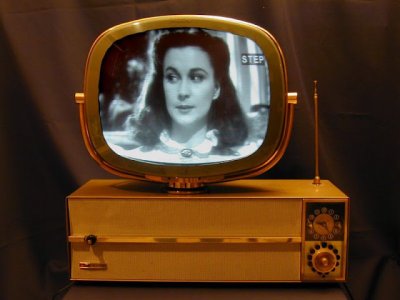
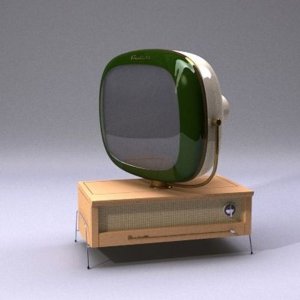
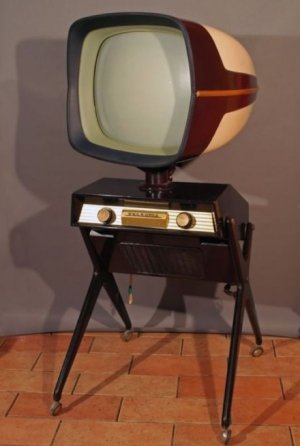
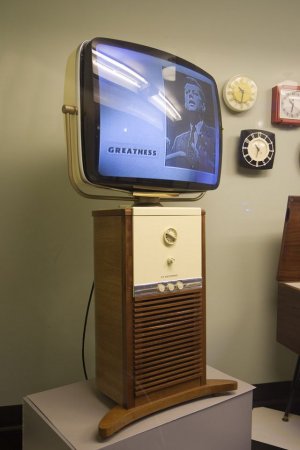
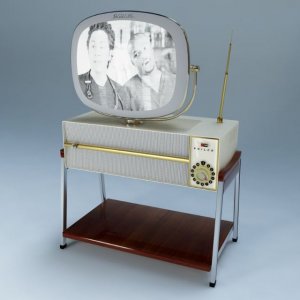
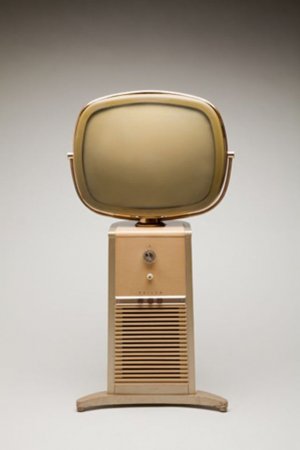
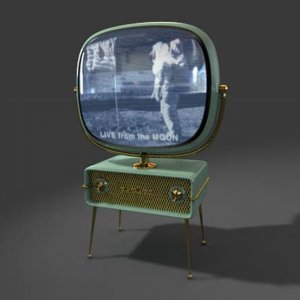
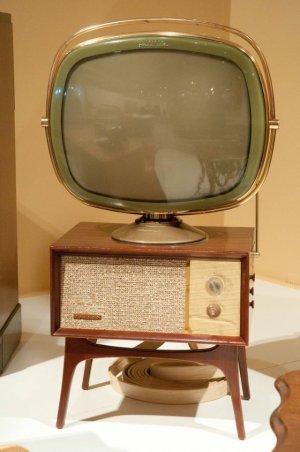
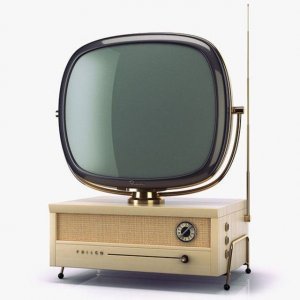
The Philco Predicta is a television made in several cabinet models in a 17” or 21” screen by the American company Philco (Philadelphia Storage Battery Company) from 1958-1960.
The Predicta was marketed as the world’s first swivel screen television. The picture tube was surrounded in Eastman plastics' new product called “tenite” which protected the glass and gave it its greenish tint. The Predicta also had a thinner picture tube than many other televisions at the time, which led it to be marketed as a more futuristic television set. The futuristic aesthetic was influenced by an interest in space-age technology, prompted by Russia’s Sputnik launch in 1957. Philco’s advertisements for Predicta touted a “TV Today From the World of Tomorrow!”
Predicta television sets were constructed with a variety of cabinet configurations, some detachable, but all separate from the tube itself and connected by wires. Initially introduced in 1958 for the Holiday Inn hotel chain and rolled out for general consumers shortly thereafter, the Predicta was discontinued in the early 1960s.









Reflector Audio - Bespoke P18
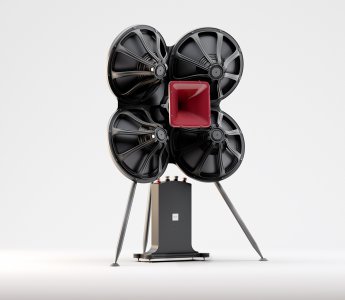
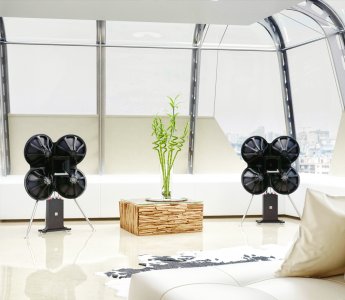
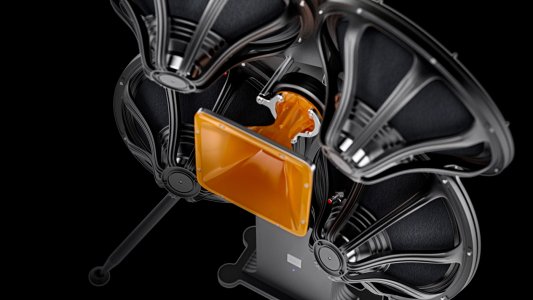
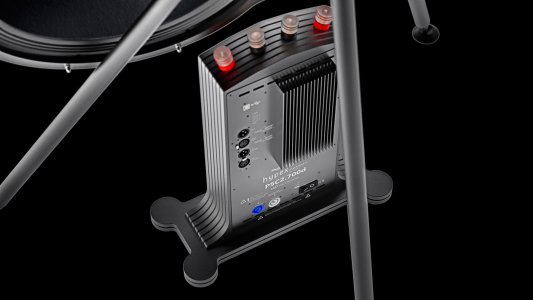
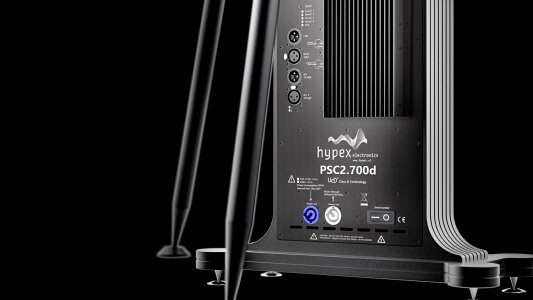
| Acoustic Design | 2-way baffle-free horn loudspeaker |
|---|---|
| Drive Units | 3” true piston motion titanium nitride coated titanium diaphragm compression driver, four 18” extremely powerful paper cone woofers |
| Frequency Range | 25 Hz-20 kHz |
| Phase Response(acoustic) | +/-30 degrees (100 Hz – 20 kHz) |
| Max continuous Sound Pressure Level | 105 dB @ 25 Hz, 130 dB (60 Hz-20 kHz) |
| Sensitivity LF | 100 dB 1W/1m |
| Sensitivity HF | 112 dB 1 W/1m |
| Amplification | Complimentary amplifiers are included |
| Dimensions (cm), weight | 88(W) x 135(H) x 37(D), 45 kg (each) |
| Loudspeaker placement | Minimum distance from the loudspeaker to the listening spot – 2.5m. Minimum distance from the loudspeaker to the wall behind - 0.5m |





Last edited:
Buy from India's official online dealer!
Similar threads
- Replies
- 0
- Views
- 12K
- Replies
- 1
- Views
- 4K
- Replies
- 4
- Views
- 8K
- Replies
- 6
- Views
- 2K


